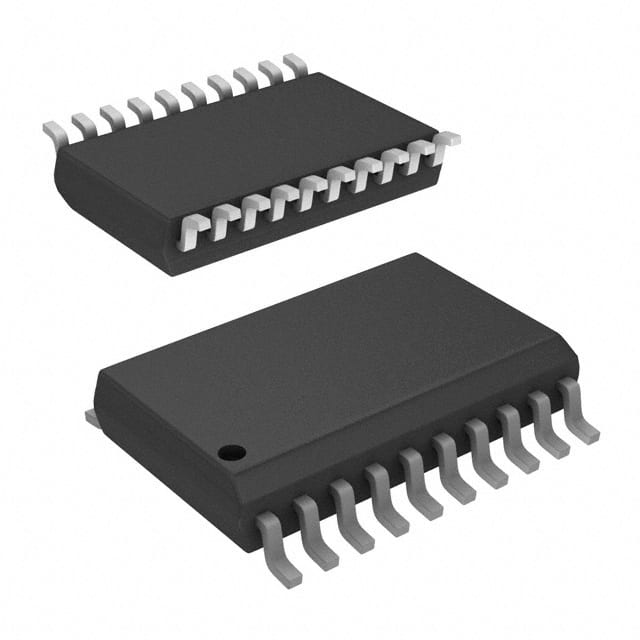Viz Specifikace pro podrobnosti o produktu.

PIC24FJ32MC101-E/SO
Introduction
The PIC24FJ32MC101-E/SO is a microcontroller belonging to the PIC24F family, designed and manufactured by Microchip Technology. This entry provides an overview of the product, including its category, use, characteristics, package, essence, packaging/quantity, specifications, detailed pin configuration, functional features, advantages and disadvantages, working principles, detailed application field plans, and alternative models.
Product Overview
- Category: Microcontroller
- Use: Embedded control applications, industrial automation, consumer electronics, and more.
- Characteristics: High performance, low power consumption, integrated peripherals, and versatile connectivity options.
- Package: SOIC (Small Outline Integrated Circuit)
- Essence: The PIC24FJ32MC101-E/SO is a powerful yet energy-efficient microcontroller suitable for a wide range of embedded control applications.
- Packaging/Quantity: Available in tape and reel packaging with varying quantities.
Specifications
- Architecture: 16-bit
- Flash Memory: 32 KB
- RAM: 2 KB
- Operating Voltage: 1.8V - 3.6V
- Clock Speed: Up to 32 MHz
- I/O Pins: 28
- Communication Interfaces: UART, SPI, I2C
- Analog-to-Digital Converter (ADC): 10-bit, up to 9 channels
- Timers: Multiple timers/counters
Detailed Pin Configuration
The PIC24FJ32MC101-E/SO features a total of 28 I/O pins, each serving specific functions such as digital I/O, analog input, communication interfaces, and more. A detailed pinout diagram is available in the product datasheet.
Functional Features
- Integrated Peripherals: Includes ADC, UART, SPI, I2C, timers, and more.
- Low Power Operation: Suitable for battery-powered applications.
- Flexible I/O Configuration: Supports various digital and analog I/O configurations.
- Enhanced Connectivity: Offers multiple communication interfaces for seamless integration with other devices.
Advantages and Disadvantages
Advantages
- High performance
- Low power consumption
- Versatile connectivity options
- Integrated peripherals
Disadvantages
- Limited memory compared to higher-end microcontrollers
- Limited number of I/O pins for complex applications
Working Principles
The PIC24FJ32MC101-E/SO operates based on the Harvard architecture, featuring separate program and data memories. It executes instructions at high speed while efficiently managing power consumption, making it suitable for both performance-critical and energy-efficient applications.
Detailed Application Field Plans
- Industrial Automation: Control systems, monitoring devices, and data acquisition equipment.
- Consumer Electronics: Home appliances, portable devices, and human-machine interfaces.
- Embedded Control: Automotive systems, robotics, and smart sensors.
Alternative Models
- PIC24FJ64GA102: Higher memory capacity and additional peripherals.
- PIC24FJ128GC006: Enhanced connectivity options and advanced analog features.
- PIC24FJ256GB110: Increased I/O capabilities and extended operating voltage range.
In conclusion, the PIC24FJ32MC101-E/SO offers a balance of performance, power efficiency, and versatility, making it a suitable choice for various embedded control applications. Its integrated peripherals, flexible I/O configuration, and low power operation make it a compelling option for designers seeking a reliable microcontroller solution.
Seznam 10 běžných otázek a odpovědí souvisejících s aplikací PIC24FJ32MC101-E/SO v technických řešeních
Question: What is the maximum operating frequency of PIC24FJ32MC101-E/SO?
Answer: The maximum operating frequency of PIC24FJ32MC101-E/SO is 32 MHz.Question: What are the key features of PIC24FJ32MC101-E/SO?
Answer: PIC24FJ32MC101-E/SO features include 32 KB Flash program memory, 2 KB RAM, and various communication interfaces.Question: Can PIC24FJ32MC101-E/SO be used in battery-powered applications?
Answer: Yes, PIC24FJ32MC101-E/SO is suitable for battery-powered applications due to its low power consumption features.Question: What development tools are compatible with PIC24FJ32MC101-E/SO?
Answer: Development tools such as MPLAB X IDE and MPLAB XC16 Compiler are compatible with PIC24FJ32MC101-E/SO.Question: Does PIC24FJ32MC101-E/SO support analog-to-digital conversion?
Answer: Yes, PIC24FJ32MC101-E/SO supports on-chip analog-to-digital conversion with multiple channels.Question: What communication interfaces does PIC24FJ32MC101-E/SO support?
Answer: PIC24FJ32MC101-E/SO supports SPI, I2C, UART, and CAN communication interfaces.Question: Is PIC24FJ32MC101-E/SO suitable for motor control applications?
Answer: Yes, PIC24FJ32MC101-E/SO is suitable for motor control applications with its integrated motor control peripherals.Question: Can PIC24FJ32MC101-E/SO be used in industrial automation systems?
Answer: Yes, PIC24FJ32MC101-E/SO is well-suited for industrial automation systems due to its robust features and communication capabilities.Question: What are the temperature range specifications for PIC24FJ32MC101-E/SO?
Answer: PIC24FJ32MC101-E/SO has a wide operating temperature range from -40°C to 125°C.Question: Are there any application notes or reference designs available for PIC24FJ32MC101-E/SO?
Answer: Yes, Microchip provides application notes and reference designs to assist in the implementation of PIC24FJ32MC101-E/SO in technical solutions.

